









| Northern Gannet (Morus bassanus (Linnaeus, 1758)) |










|
|
Scientific name: Morus bassanus (Linnaeus, 1758) Common name: Northern Gannet French name: Fou de Bassan Order: Suliformes Family: Sulidae Size: Body size: 87 to 100 cm; Weight: 2.4 à 3.6 kg; Wingspan: 165 to 180 cm. Habitat: Sea coasts and offshore. Food: Fish caught by diving like an arrow up to 15 meters deep. Nesting: Northern Gannets nest in large, dense colonies on islands or rocky shores. Couples can stay together for life. There is only one egg per clutch. Migration: Gannets disperse southwards along the coasts at the end of the breeding season. Geographic area: Atlantic, North Sea and Western Mediterranean coasts. |
Northern Gannets are large white birds with black wingtips. Neck and head are pale yellow. The dagger-shaped bill is light grey and marked with thin and sharp black lines. The eyes are light grey, outlined in blue and surrounded by a black mask. There is no sexual dimorphism. First-year young are dark brown and gradually lighten to reach adult plumage around 5 years of age. |
| [To know more about the Northern Gannet] [Next picture] [Top] |
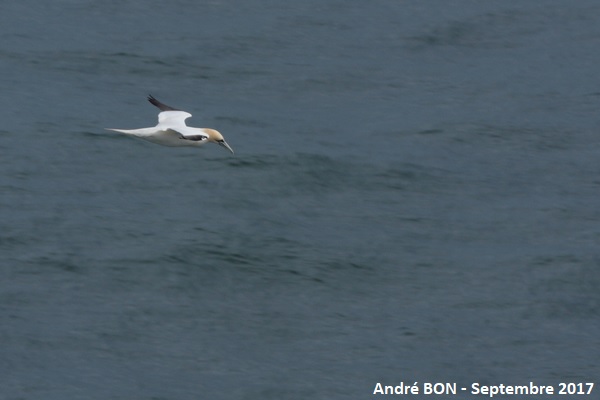
|
Visits to Bonaventure Island are not possible today because the sea is too rough. We therefore content ourselves with a walk along the coast. Sightings of Northern Gannets in flight are quite numerous. |
| [To know more about the Northern Gannet] [Next picture] [Previous picture] [Top] |

|
First view of the colony of Northern Gannets on Bonaventure Island from the boat which skirts the coast before disembarking tourists wishing to see the colony more closely. By luck the weather is better today. |
| [To know more about the Northern Gannet] [Next picture] [Previous picture] [Top] |
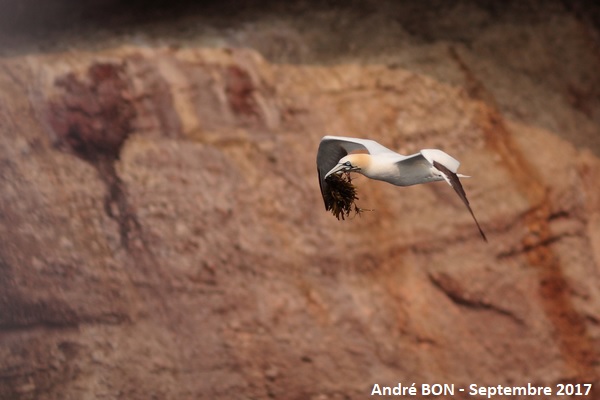
|
Transporting plants to the nesting area (photo taken from the boat). |
| [To know more about the Northern Gannet] [Next picture] [Previous picture] [Top] |
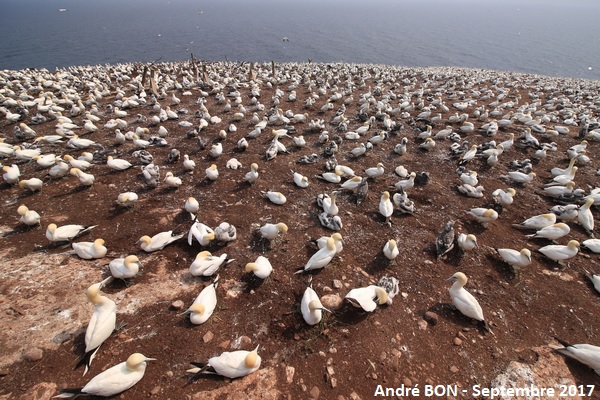
|
We disembark on Bonaventure Island on the west side and the reserve guards explain the conditions of the visit. You then have to follow a small path that leads to the colony of Northern Gannets on the east coast, facing the rising sun. Here is the colony, it's really impressive. It is one of the largest in the world. However, as soon as we arrived, the guards ordered us to turn around immediately, the weather is getting worse and we have to immediately join the boat for the return. We took 10 minutes to obey, and the following photos were taken during this short time. |
| [To know more about the Northern Gannet] [Next picture] [Previous picture] [Top] |
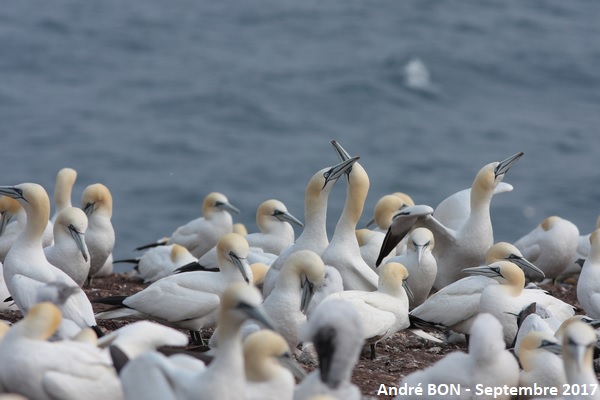
|
You can see, here and there, courtship displays, beaks pointing towards the sky while shaking heads. |
| [To know more about the Northern Gannet] [Next picture] [Previous picture] [Top] |
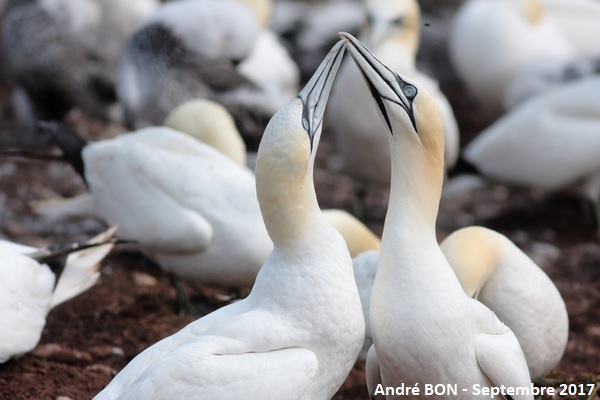
|
Another courtship display a little closer. |
| [To know more about the Northern Gannet] [Next picture] [Previous picture] [Top] |
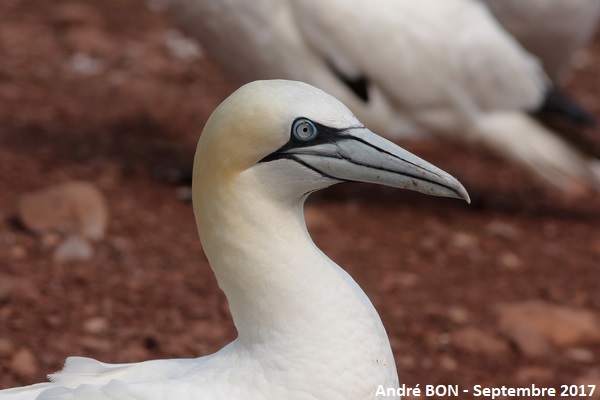
|
Northern Gannets must be accustomed to visitors and it is possible to observe them very close to the protective barriers. |
| [To know more about the Northern Gannet] [Next picture] [Previous picture] [Top] |
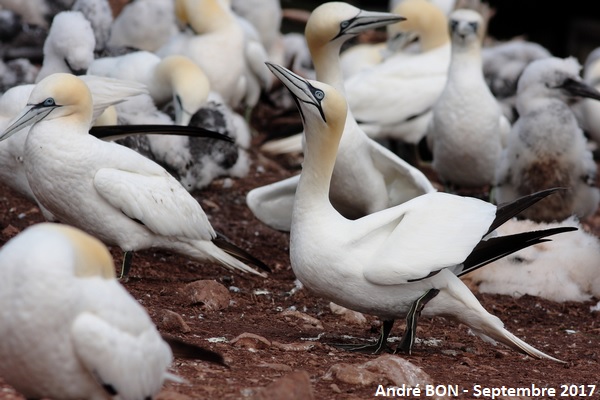
|
Already rather large juveniles are visible among the adults. |
| [To know more about the Northern Gannet] [Next picture] [Previous picture] [Top] |
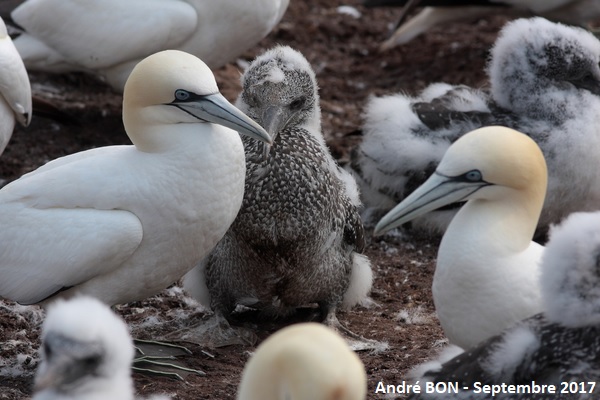
|
Juveniles are dark in colour and will not have their adult plumage until about 5 years of age. |
| [To know more about the Northern Gannet] [Previous picture] [Top] |
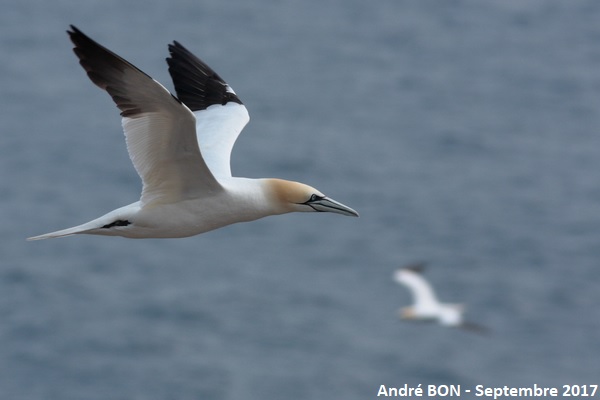
|
The comings and goings above the colony also allow you to take many photos in flight (and we only stayed there for 10 minutes…) |